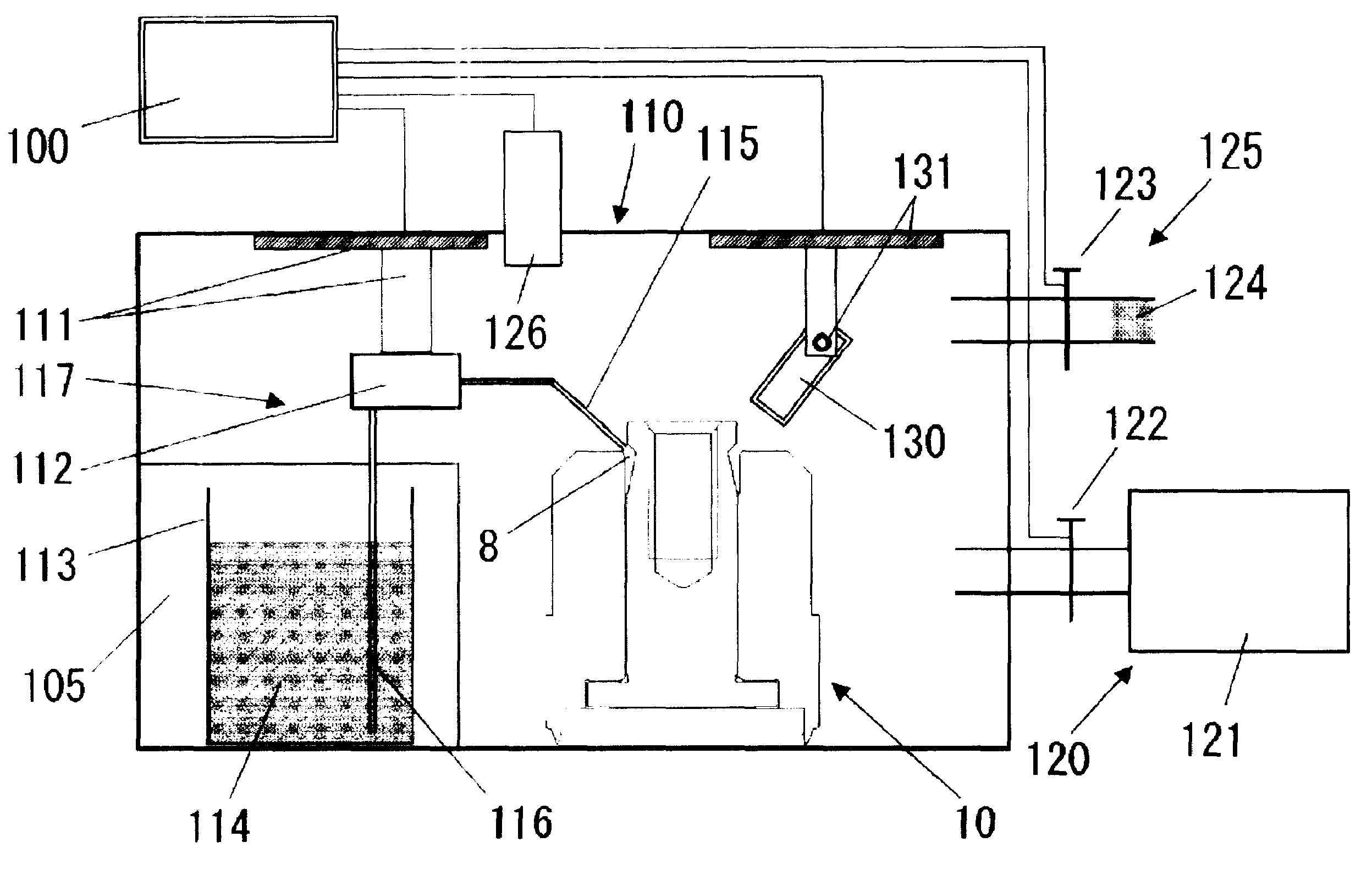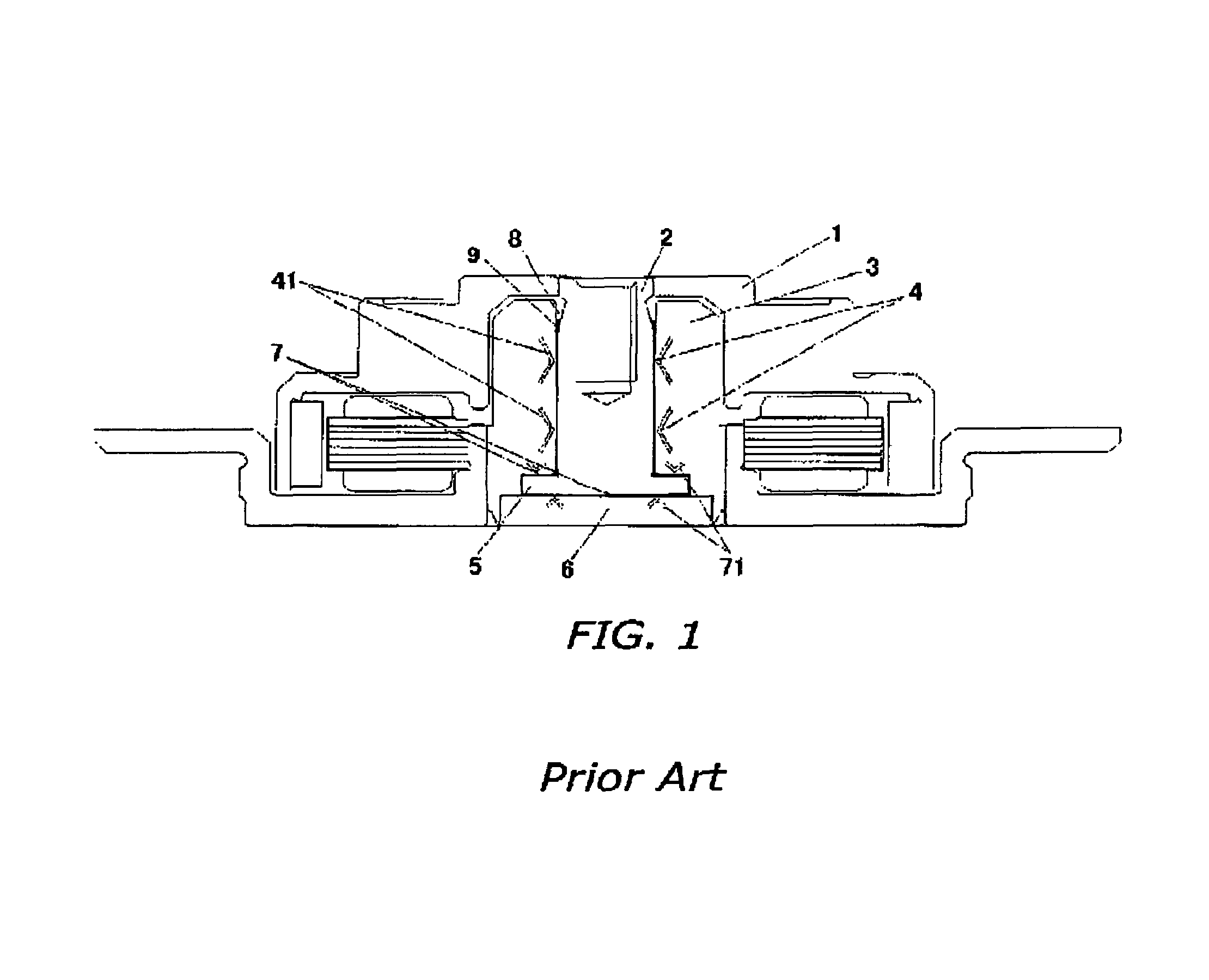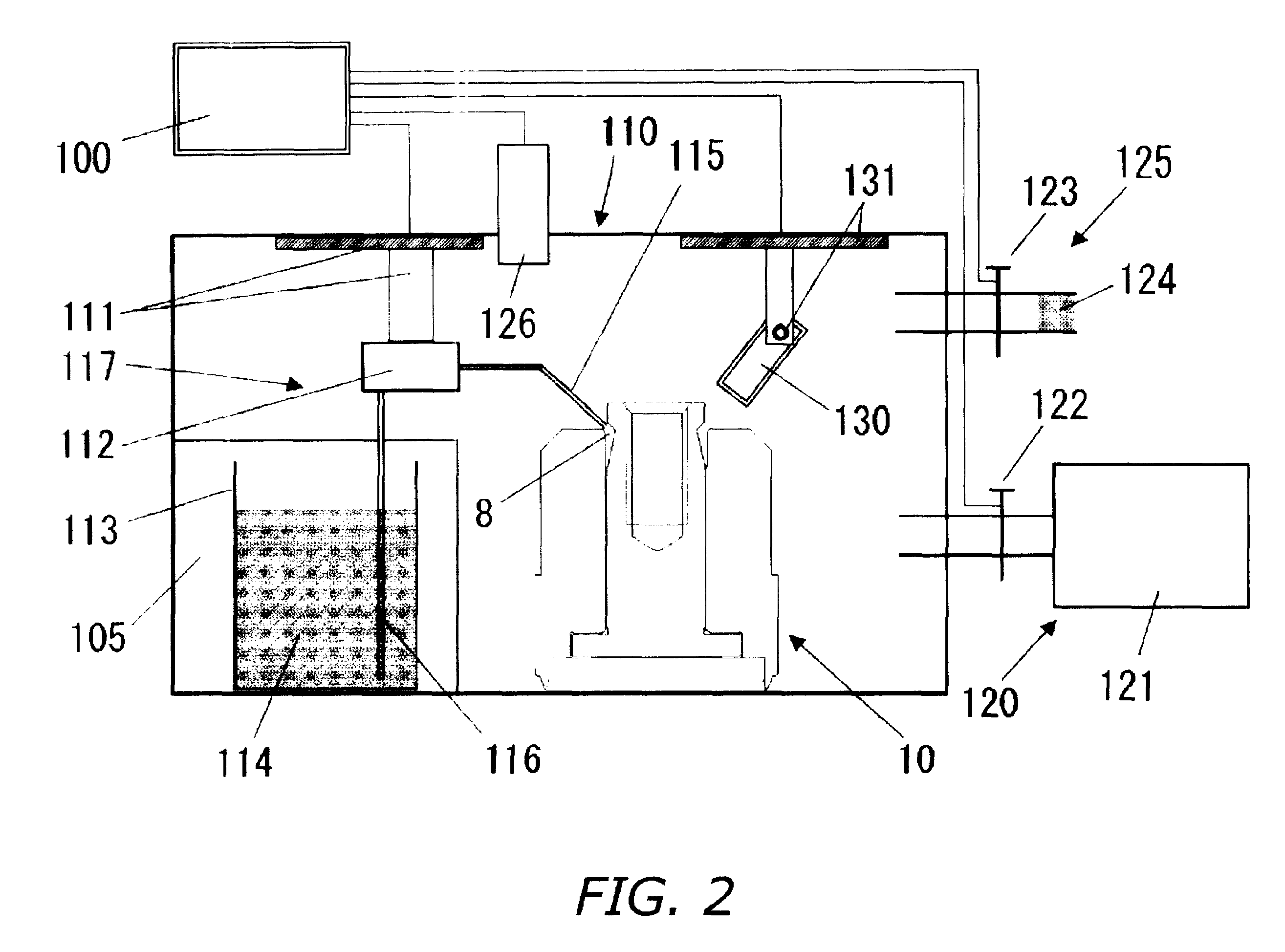Method and apparatus for charging oil into fluid-dynamic-pressure bearings, spindle motor utilizing fluid-dynamic-pressure bearings, and signal record-and-playback device utilizing fluid-dynamic-pressure bearings
a technology of fluid-dynamic bearings and fluid-dynamic bearings, which is applied in the direction of sliding contact bearings, manufacturing tools, instruments, etc., can solve the problems of inability to wipe up, far and away more complicated work, and inability to use the first oil-charging method, etc., to achieve accurate charging of bearings, more economically and easily
- Summary
- Abstract
- Description
- Claims
- Application Information
AI Technical Summary
Benefits of technology
Problems solved by technology
Method used
Image
Examples
first embodiment
[0033]In the first embodiment, by carrying out oil injection and pressurization steps in two respective cycles, or more than that, the optimal amount of oil for the bearings is charged into them precisely and stably.
[0034]At first an oil-unfilled bearing unit 10 is inserted into a vacuum chamber 110 through a not-illustrated port in one of its side walls, and is set in place in a predetermined position within the vacuum chamber 110; the port is closed and the chamber is evacuated. In evacuating the chamber a leak valve 123 that makes up part of a gas-introducing mechanism 125 is closed, and the chamber is evacuated by an evacuating means 120. The evacuating means 120 is constituted from a rotary pump 121 and a valve 122; evacuation is controlled on / off by opening and closing the valve 122.
[0035]During evacuation pressure is monitored with a vacuum gauge 126, and after it reaches a first gas pressure P1 that has been determined in advance, the oil injection work is begun with the eva...
second embodiment
[0052]In the second embodiment, charging oil into the bearings is carried out by a program of injecting and pressurizing a third amount of oil that is greater than the preestablished volume of oil based on the value that the bearings are designed for, and of removing a fourth volume of oil that has been injected exceeding the preestablished volume. Precise, stable oil fill is thereby realized.
[0053]In the present embodiment a device furnished with an oil removal nozzle 140 and a mechanism 141 for adjusting its position (FIG. 3) is additionally installed in the oil-charging apparatus illustrated in FIG. 2. A slender metal tube such as a syringe needle, or else a brush or the like that adsorbs and removes oil can be utilized as the oil removal nozzle 140. Cases in which the oil is to be removed not by adsorption but by aspiration require installation of an aspiration device (not illustrated) for imparting aspirating force to the removal nozzle. Likewise, cases in which the oil is to b...
PUM
| Property | Measurement | Unit |
|---|---|---|
| pressure | aaaaa | aaaaa |
| pressure | aaaaa | aaaaa |
| gas pressure | aaaaa | aaaaa |
Abstract
Description
Claims
Application Information
 Login to View More
Login to View More - R&D
- Intellectual Property
- Life Sciences
- Materials
- Tech Scout
- Unparalleled Data Quality
- Higher Quality Content
- 60% Fewer Hallucinations
Browse by: Latest US Patents, China's latest patents, Technical Efficacy Thesaurus, Application Domain, Technology Topic, Popular Technical Reports.
© 2025 PatSnap. All rights reserved.Legal|Privacy policy|Modern Slavery Act Transparency Statement|Sitemap|About US| Contact US: help@patsnap.com



